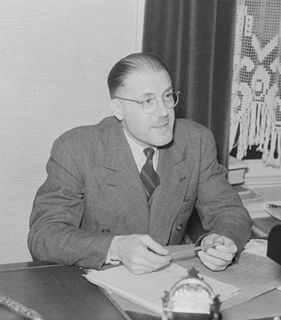Musical repertoire is a collection of music pieces played by an individual musician or ensemble, composed for a particular instrument or group of instruments, voice, or choir, or from a particular period or area.
Musical repertoire is a collection of music pieces played by an individual musician or ensemble, composed for a particular instrument or group of instruments, voice, or choir, or from a particular period or area.

The pipe organ is a musical instrument that produces sound by driving pressurized air through the organ pipes selected from a keyboard. Because each pipe produces a single pitch, the pipes are provided in sets called ranks, each of which has a common timbre and volume throughout the keyboard compass. Most organs have many ranks of pipes of differing timbre, pitch, and volume that the player can employ singly or in combination through the use of controls called stops.

A piano concerto is a type of concerto, a solo composition in the classical music genre which is composed for a piano player, which is typically accompanied by an orchestra or other large ensemble. Piano concertos are typically virtuoso showpieces which require an advanced level of technique on the instrument. These concertos are typically written out in music notation, including sheet music for the pianist, orchestra parts for the orchestra members, and a full score for the conductor, who leads the orchestra in the accompaniment of the soloist.
The luthéal is a kind of hybrid piano which extended the "register" possibilities of a piano by producing cimbalom-like sounds in some registers, exploiting harmonics of the strings when pulling other register-stops, and also some registers making other objects, which were lowered just above the strings, resound. The instrument became obsolete partly because most of its mechanics were too sensitive, needing constant adjustment. The only pieces in the general repertoire to feature the luthéal are L'enfant et les sortilèges (1920–25) and Tzigane (1924), by Maurice Ravel.
Bernhard Heiden was a German and American composer and music teacher, who studied under and was heavily influenced by Paul Hindemith. Bernhard Heiden, the son of Ernst Levi and Martha (Heiden-Heimer) was originally named Bernhard Levi, but he later changed his name.

Claude Champagne was a French Canadian composer, teacher, pianist, and violinist.
Sven-Erik Bäck was a Swedish composer of classical music. He was born in Stockholm.

Frédéric Chopin's Impromptu No. 1 in A♭ major, Op. 29 was composed in 1837.
Stanley Babin (1932-2010) was a composer and pianist.
Images is a cycle of piano pieces composed by Howard Skempton in 1989. This work and a variations set, The Durham Strike, are the only large-scale piano works by Skempton, although he has been composing piano music since the beginning of his career.
Pierre Lantier was a French composer and pianist, and the husband of fellow composer Paule Maurice.
Franz Liszt composed his transcription of the Sarabande and Chaconne from Handel's opera Almira for piano solo (S.181) in 1879 for his English piano student Walter Bache to play at a Handel festival in England. The Almira transcription is noted by critics as one of the most striking of Liszt's late concert arrangements as well as his only setting of a baroque piece from his late period.
Three Fantastic Variations on Lilliburlero for Two Pianos is a composition by the British composer Madeleine Dring, published in 1948. Maurice Hinson describes it as being an octatonic work comprising three mildly contemporary, moderately difficult conventional variations in common time that rely too heavily on triplets. The composition takes as its theme Lilliburlero, a dance tune sometimes attributed to Henry Purcell, who published it in his Musick's Handmaid (1689).
Rhapsodie espagnole, S.254, R.90, is a composition for solo piano composed by Franz Liszt in 1858. The piece is very suggestive of traditional Spanish music, and was inspired by Liszt's tour in Spain and Portugal in 1845. When played, this piece takes roughly 11–14 minutes and contains many extreme technical challenges, including rapid chords and octaves. Ferruccio Busoni arranged the piece for piano and orchestra in 1894.
Rumores de la Caleta, Op. 71, No. 6, is a composition by Isaac Albéniz. The piece is subtitled "Malagueña".

A Leaf is a classical piece written by Paul McCartney, with assistance from John Fraser, and performed by Anya Alexeyev on piano. The piece is split into 7 parts. It was recorded live in front of Prince Charles as part of the "An Evening with Paul McCartney & Friends" concert, on 23 March 1995 at Royal College of Music, and it was debuted on US radio as part of a radio special titled Classical McCartney.
The Consolations are a set of six solo piano works by Franz Liszt. The compositions take the musical style of Nocturnes with each having its own distinctive style. Each Consolation is composed in either the key of E major or D♭ major. E major is a key regularly used by Liszt for religious themes.
Denes Agay was a Hungarian-born American composer, arranger and author.

The Polonaise in C major, Op. 89, by Ludwig van Beethoven is a polonaise for solo piano, published in 1815. He composed it in December 1814, at a time when the polonaise was becoming a popular dance and class marker among the European nobility. Beethoven was presented as a prominent artist at the ongoing Congress of Vienna, where he met the visiting Russian Empress Elizabeth Alexeievna. He dedicated the polonaise to the Empress, and was compensated with a sum of 50 ducats. The piece is Beethoven's first and only published standalone polonaise, and is notable as a precursor to Chopin's more well-known polonaises.
Frances Terry was an American composer.